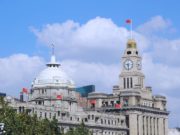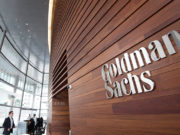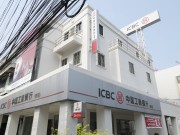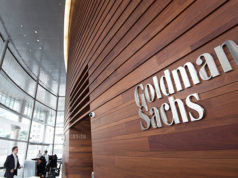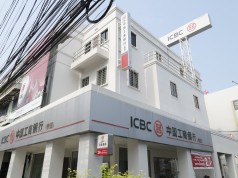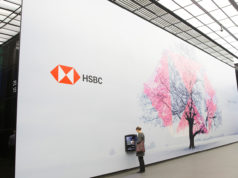HKIMR Report: Algorithmic and High-frequency Trading in Hong Kong’s Equity Market – 2021
June 2021
The Hong Kong Institute for Monetary and Financial Research (HKIMR), the research arm of the Hong Kong Academy of Finance (AoF) has released an Applied Research report in June 2021, titled “Algorithmic and High-frequency Trading in Hong Kong’s Equity Market: Adoption, Market Impact and Risk Management”.
The report provides an overview of algorithmic trading (AT) and high-frequency trading (HFT) across international financial markets, discusses the results of research analysis and the findings of a survey focusing on Hong Kong’s equity market that have been conducted by HKIMR with the help of external collaborators. The report also details the potential risks emerging from AT/HFT and reviews the mitigating measures and best practices used internationally and in Hong Kong to monitor and manage these risks, as well as the current regulatory oversight of AT/HFT activities. View Report: Algorithmic and High-frequency Trading in Hong Kong’s Equity Market – June 2021
- Overview of algorithmic trading (AT) and high-frequency trading (HFT) across international financial markets
- Research analysis and the findings of a survey focusing on Hong Kong’s equity market
- Potential risks emerging from AT/HFT
- Mitigating measures and best practices used internationally and in Hong Kong to monitor and manage these risks
- Current regulatory oversight of AT/HFT activities.
Edmond Lau, Deputy Chief Executive of the HKMA and Deputy Chairman of the HKIMR:
“The research findings suggest that overall AT/HFT activities in Hong Kong’s equity market have remained modest and stable over the period between August 2018 and July 2020. Although a higher level of AT/HFT activities is not associated with a deterioration of market liquidity or increased market volatility during the period investigated, further validation is needed to gather evidence regarding the resilience and stability of liquidity provided by AT/HFT participants and the impact of AT/HFT on market volatility during turbulent times. Meanwhile, the report highlights that the adoption of AT/HFT technologies can give rise to new sources of risk, and measures have been proposed or implemented by market participants and exchanges to mitigate the risks and enhance the effectiveness of traditional risk management practices.
We hope that this report serves as a useful starting point towards a better understanding of AT/HFT in Hong Kong and it is able to offer meaningful insights regarding the potential risks emerging from AT/HFT.”
HKIMR Report: Algorithmic and High-frequency Trading in Hong Kong’s Equity Market – June 2021
1. Algorithmic and high-frequency trading in international financial markets: A Bird’s Eye View:
- Algorithmic trading (AT) uses pre-programmed instructions to electronically trade securities automatically; high-frequency trading (HFT) further emphasises high speed and aims to maintain very tight intraday inventory positions.
- Research studies show that global equity markets have experienced a widespread adoption of AT/HFT technologies.
- Existing evidence suggests that AT/HFT generally improves market liquidity. However, this increased liquidity may not be resilient. Furthermore, with higher liquidity co-movements across markets due to intense AT/HFT activities, there are potential implications for systematic risk, as the speed of shock transmission across different markets may increase.
- The evidence relating AT/HFT to market volatility is mixed and inconclusive. Some studies have highlighted the risks of AT/HFT exacerbating period of unusual market stress.
- More research is needed to understand these complex relationships.
2. Algorithmic and high-frequency trading in Hong Kong’s Equity Market: Statistical Evidence and Market Views
- Our analysis, based on the period between August 2018 and July 2020, shows that about 11% of all cash equity trades occurring on the Main Board can be attributed to AT/HFT. The Main Board’s order-to-trade ratio is about 7:1 and overall AT/HFT activities have remained modest and stable over the two-year period.
- Our research also suggests that AT/HFT does not deteriorate market liquidity and it is not associated with increased market volatility. However, further validation is needed to gather evidence regarding the resilience and stability of liquidity provided by AT/HFT participants as well as the impact of AT/HFT on market volatility during turbulent times.
- Survey findings show that while participants have benefitted from AT/HFT adoption, the reliance on data and technologies deployed, requirement of capabilities for managing data, software, hardware and computer network, and the exposure to potential technical risks associated with failure of hardware or software, or network outage have been the main challenges of adopting AT/HFT technologies.
3. Risks Emerging from Algorithmic And High-frequency Trading and Mitigating Measures
- Potential risks associated with AT/HFT adoption include market liquidity risk during market stress, technical risk, market integrity risk, shock transmission risk, and risk of undermined risk management.
- Measures to mitigate AT/HFT risks include adhering to best practices when adopting AT/HFT technologies, upholding the integrity of trading strategies and algorithms, raising risk awareness, establishing proper and robust internal controls, maintaining robust governance over AT/HFT adoption, implementing volatility control mechanisms, restraining AT/HFT and establishing sandboxes for assessing the impact of changes in market design, policies and regulations.
- Extended market quality metrics and enhanced data analytics capabilities can help strengthen the capacity of overseeing AT/HFT.
Conclusion
Amid the digitalisation of securities trading, and the advancements in sophisticated proprietary trading algorithms, high-speed computer systems and co-location services, AT/HFT has been increasingly playing an important role in international financial markets and has become an important part of securities trading across asset classes and geographical locations, especially for equity trading. AT uses machines to assist humans in executing trading strategies. As a subset of AT, HFT rapidly places large amounts of orders and some HFT participants perform market making.
In this report we carry out a statistical investigation based on the period between August 2018 and July 2020, and find that about 11% of all cash equity trades occurring on the Main Board in Hong Kong’s equity market can be attributed to AT/HFT. The Main Board’s order-to-trade ratio is about 7:1 and overall AT/HFT activities have remained modest and stable over the two-year period. The findings of our survey and interviews corroborate this evidence showing that trading algorithms are indeed a growing part of the respondents’ investment infrastructure.
Furthermore, our research shows that while the level of AT/HFT activities in Hong Kong’s equity market does not deteriorate market liquidity, there is no clear pattern that associates AT/HFT to market volatility. Although these results are broadly consistent with the existing research findings recorded for major international markets, it is important to highlight that, because of the short- time span of our sample period, further validation is needed to gather evidence regarding the resilience and stability of liquidity provided by AT/HFT participants as well as the impact of AT/ HFT on market volatility during turbulent times. In addition, it is natural to hypothesise that the market impact and the risks associated with AT/HFT may potentially increase when its participation and prevalence grows over time.
The findings of our survey and interviews show that equity market participants in Hong Kong have benefited from the adoption of AT/HFT technologies, but they also faced emerging challenges. In fact, the adoption of AT/HFT technologies can give rise to new sources of risks to equity market participants and regulators. In order to effectively manage these new risks, market participants and trading venues have proposed or implemented a number of mitigating measures aiming at addressing AT/HFT risks in a holistic manner. Regulators have also integrated the monitoring of AT/HFT activities into their existing supervisory framework and strengthened their monitoring tools in overseeing AT/HFT for upholding market quality and financial stability.
Although several academic and policy studies have improved our understanding of the complex links relating to AT/HFT and the different dimensions of market quality, more is needed to ascertain the potential risks and their impact on market integrity and financial stability. In view of the high speed, large volume of order and trade data and complexity involved in AT/HFT, continuing efforts to develop market quality metrics and enhance data analytics capabilities for surveillance and policy developments are desirable goals to pursue in the near future.
View Report: Algorithmic and High-frequency Trading in Hong Kong’s Equity Market – June 2021
About the Hong Kong Academy of Finance (AoF)
The AoF is set up with full collaboration amongst the HKMA, the Securities and Futures Commission, the Insurance Authority and the Mandatory Provident Fund Schemes Authority. By bringing together the strengths of the industry, the regulatory community, professional bodies and the academia, it aims to serve as (i) a centre of excellence for developing financial leadership; and (ii) a repository of knowledge in monetary and financial research, including applied research.
About the Hong Kong Institute for Monetary and Financial Research (HKIMR)
The HKIMR is the research arm of the AoF. Its main remit is to conduct research in the fields of monetary policy, banking and finance that are of strategic importance to Hong Kong and the Asia region. The Applied Research studies undertaken by the HKIMR are on topics that are highly relevant to the financial industry and regulators in Hong Kong, and they aim to provide insights on the long-term development strategy and direction of Hong Kong’s financial industry.
Sign Up / Register
Caproasia Users
- Manage $20 million to $3 billion of assets
- Invest $3 million to $300 million
- Advise institutions, billionaires, UHNWs & HNWs
Caproasia Platforms | 11,000 Investors & Advisors
- Caproasia.com
- Caproasia Access
- Caproasia Events
- The Financial Centre | Find Services
- Membership
- Family Office Circle
- Professional Investor Circle
- Investor Relations Network
Monthly Roundtable & Networking
Family Office Programs
The 2025 Investment Day
- March - Hong Kong
- March - Singapore
- July - Hong Kong
- July - Singapore
- Sept- Hong Kong
- Sept - Singapore
- Oct- Hong Kong
- Nov - Singapore
- Visit: The Investment Day | Register: Click here
Caproasia Summits
- The Institutional Investor Summit
- The Investment / Alternatives Summit
- The Private Wealth Summit
- The Family Office Summit
- The CEO & Entrepreneur Summit
- The Capital Markets Summit
- The ESG / Sustainable Investment Summit



